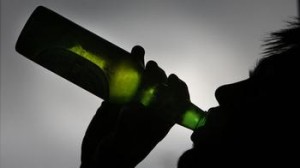Erectile dysfunction (ED, impotence) is a subject that is difficult to research because of its personal nature. Very few good studies are available regarding the question as to how common it would be among older men.
A team of medical experts under Dr. Constance G. Bacon from the Harvard School of Public Health and other institutions have investigated this problem in men older than 50 years and published the results in the August 5, 2003 issue of the Annals of Internal Medicine.
31,724 men aged 53 to 90 years were taking part in the Health Professionals Follow-up Study. Since 1986 they had been filling out detailed questionaires biennially. In 2000 detailed questions about sexual function were also included. Erectile dysfunction was defined as “having poor or very poor ability to have and maintain an erection sufficient for intercourse without treatment during the past 3 months”. The investigators found that about 1/3 of the men above the age of 50 had a sexual dysfunction. Such factors as orgasm, ability to have intercourse, sexual desire and overall sexual function were all affected more and more with every year after the age of 50. When this was further analyzed using multivariate analyses an interesting pattern of reasons for this emerged. The following factors were identified to be independent risk factors for the development of erectile dysfunction.
Each of the factors from this table is an independent risk factor and can be managed separately. For instance, the investigators found that a higher level of physical activity was associated with much less ED. The best group (men with no ED) was found among those who were always conscious about disease prevention and who had none of the conditions listed in this table or other chronic medical conditions. Leanness and physical activity were associated with good sexual functioning in this study.
| Risk factors leading to erectile dysfunction (ED) | |
| Symptoms: | Comments: |
| increasing age |
aging likely affects the blood supply to the swelling bodies of the penis; it also clamps down on testosterone production of the testicles |
| smoking | accelerates aging and hardening of arteries |
| diabetes mellitus | affects circulation and nerve impulse transmission |
| stroke |
interferes with brain centers of arousal |
| antidepressant medication | anticholinergic side-effect interferes with penile erection |
| beta-blocker medication | reduction of libido (likely at the brain level from sympathetic nerve block) |
| alcohol consumption | alcohol is a nerve poison that interferes with pudendus nerve function (lack of erections) |
| TV viewing time | due to prolonged sitting there is a chronic lack of exercise that leads to nerve conduction and circulatory problems resulting in ED |
This summary is based on a paper published in the medical journal of Annals of Internal Medicine 2003;139:161-168 by Dr. Constance G. Bacon and co-workers.
Here is a brief chapter on erectile dysfunction from Dr. Schilling’s web-based free Net Health Book.
Last edited October 26, 2014








